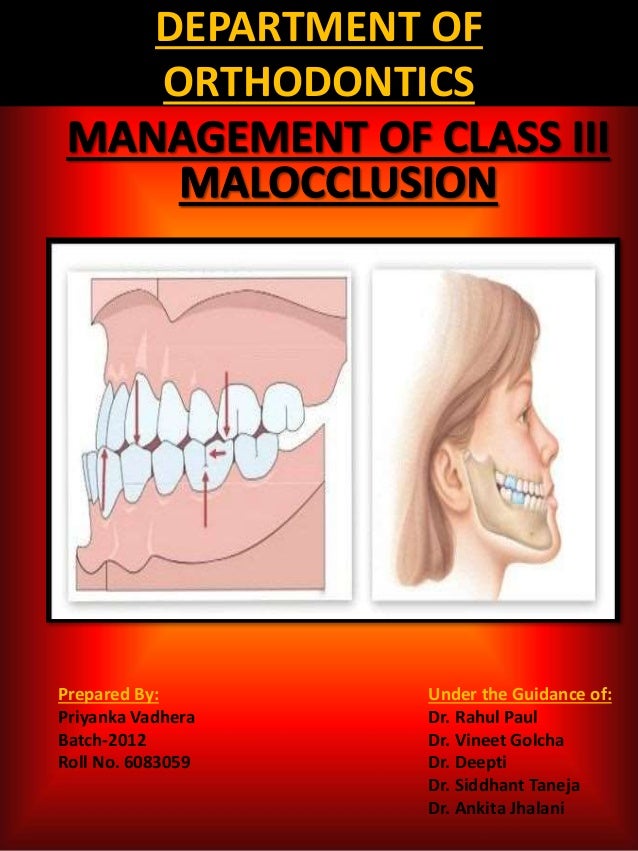class iii malocclusion treatment options
Treatment Options for Class III Malocclusion in Growing Patients with Emphasis on Maxillary Protraction Zeinab Azamian 1 and Farinaz Shirban 1 1 Torabinejad Dental Research Center Department of Orthodontics School of Dentistry Isfahan University of Medical Sciences Isfahan 81746-73461 Iran. 1 Treating such cases becomes much more challenging when the patient rejects surgery due to fear cost or esthetic concerns but continues to expect a good result.
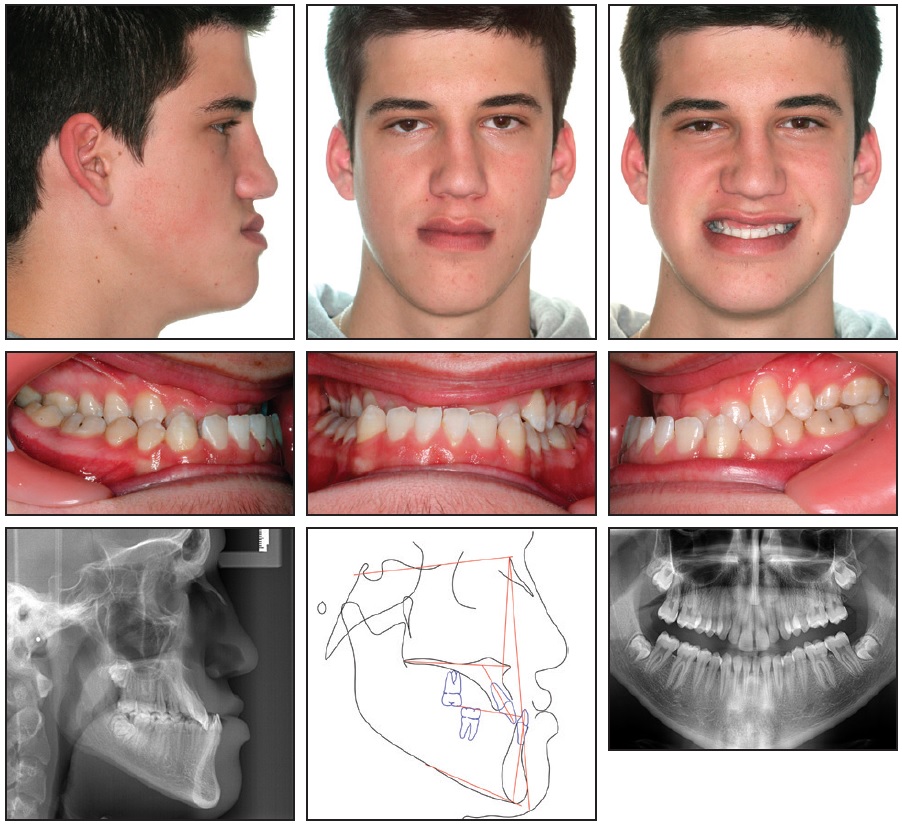
Nonsurgical Correction Of Severe Skeletal Class Iii Malocclusion Jco Online Journal Of Clinical Orthodontics
Extraoral appliances include face mask reverse chin cup reverse headgear and protraction headgear and intraoral appliances include tongue appliance fixed tongue appliance tongue plate Frankel III miniplate in.

. What causes a Class III malocclusion. O ptimal treatment of a Class III malocclusion with skeletal disharmony requires orthognathic surgery complemented by orthodontics. For class 2 and class 3 malocclusion cases we may attempt to gradually adjust the bite to a class 1 condition and then straighten the patients teeth as described above.
Early Treatment of Skeletal Class III Malocclusions. The space for retraction and retroclination of the lower incisors may need to be obtained by extraction of lower first or second premolars. Growing patients with skeletal Class III malocclusion characterized by maxillary deficiency can be treated by either extraoral or intraoral appliances.
Reverse twin block or class III twin blocks can be used successfully for early treatment of class III malocclusions in deciduous dentition. Surgery is generally thought to be the last resort option for treating malocclusion and usually other less invasive options are considered first. An orthodontic evaluation revealed the patient had a skeletal class III malocclusion with bilateral posterior crossbites extending anteriorly to.
5 Many type of treatment are suggested in dental literature for the treatment of Class III malocclusion and pseudo-Class III malocclusion such as rapid maxillary expansion with face mask RMEFM. This outdated dogma has now. 10 rows 1.
In certain forms of class III malocclusion treatment might involve alignment of the maxillary arch proclination of the upper anteriors and retraction of the mandibular incisors whereas the molars are maintained in a class III malocclusion. The morbidities and compromises of different treatment options. Early treatment with facemask and late treatment with surgery have previously been the most popular options however we should only decide on treatment modality after contemplation of the causes.
Braces simultaneously straighten teeth and adjust a bite. Theyre visible so its impossible to hide the therapy from others. Skeletal malocclusion with a relatively normal maxilla and a moderately protrusive mandible may be treated with the use of a chin cup.
Most authors agree that an early intervention is the best option for Class III malocclusion treatment because of the possibility of orthopedic management through facemask therapy after maxillary expansion. When its complete braces affix to teeth to straighten them. Several treatment options have been proposed for these types of cases 23.
Etiologic factors for Class III malocclusions include a wide spectrum of. The patient had a class III molar relationship with no overjet and no overbite. Dental Class II is one where the distobuccal cusp of the upper first molar falls in the buccal groove of the lower first molar while a skeletal Class II malocclusion can be due to a mandibular deficiency caused by reduced size or retroposition or due to a maxillary excess or a combination of both2 The cause for Class II establishment in an.
In Class III malocclusion the overjet is reduced and may be reversed with one or more incisor teeth in lingual crossbite. Your first step in deciding on treatment should be asking what are the different treatment options for a class 3 malocclusion There are several potential methods for dealing with this tooth problem and each one has its own unique advantages. This treatment modality is popular among the Asian population because of its favorable effects on the sag- ittalandverticaldimensionsTheobjectiveofearlytreatment with the use of a.
Read more Back to top. A palate expander to stimulate upper jaw growth in children. Class III malocclusion The relative mesio-distal relations of the jaws and dental arches are abnormal where the mandibular teeth occlude the maxillary teeth mesial to its normal position.
There was a 2mm maxillary midline deviation to the right. In the past class 3 malocclusion was frequently corrected with surgery but for some patients non-surgical treatment is now a possibility. This type of malocclusion involves a number of cranial base and maxillary and mandibular skeletal and dental compensation components.
Growth modification should be commenced before the pubertal growth spurt after this spurt only the latter two options are possible. In Class III malocclusion originating from mandibular prognathism orthodontic treatment in growing patients is not a good choice and in most cases orthognathic surgery is recommended after the end of growth. We all previously believed that Class III was completely or at least mainly genetic.
Here are the treatment options. People often balk at these therapies. However when a child shows a dentoskeletal Class III malocclusion very often the parents require an orthodontic treatment to improve both the occlusion and the esthetics.
The right treatment is determined based on the origin of the malocclusion and the severity of the problem. Click a treatment category to explore. Growth modification dentoalveolar compensation orthodontic camouflage and orthognathic surgery.
Fixed braces for mild dental class 3 malocclusions in adolescents and. From the available Class III treatment options orthopedic modification as well as orthognathic surgery might be expected to exert the greatest influence on the anatomy and volume of the airway. There are several different treatments that can be used to correct class 3 malocclusions.
There are three main treatment options for skeletal class III malocclusion. Early class III management in deciduous dentition. Moreover the early treatment may help these children to avoid psychological problems increasing their self-confidence and self-esteem and at the same time the worsening.
In the early mixed dentition and in older patients with mild skeletal discrepancies orthodontic treatment usually involves proclining the maxilliary anterior teeth into positive overjet. Finally Class III patients might have higher risk of being mouth breathers than Class I patients 32 and 23 respectively 4. This would redirect growth making the.

Non Surgical Compensation Of Skeletal Class Iii Malocclusions Oral Health Group

Treatment For Class Iii Malocclusion Pocket Dentistry

A 10 Year Old Male Patient With A Severe Class Iii Malocclusion Download Scientific Diagram

Class Iii Treatment Photos Orthodontics Cary Nc Clayton Nc
Class Iii Camouflage With Mandibular Bicuspid Extraction Orthodontic Products
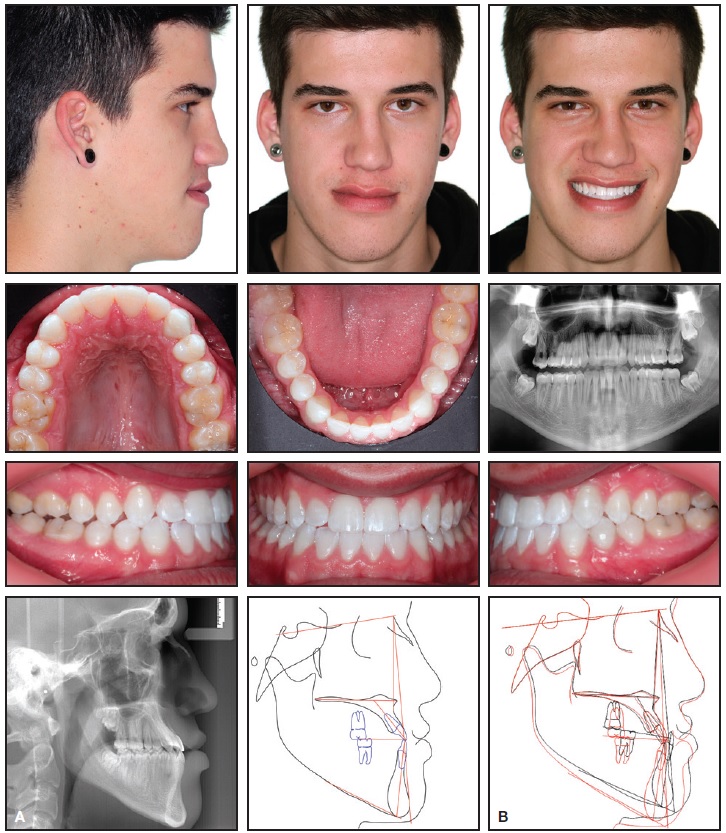
Nonsurgical Correction Of Severe Skeletal Class Iii Malocclusion Jco Online Journal Of Clinical Orthodontics

Orthodontic Surgical Treatment Of Class Iii Malocclusion With Extraction Of An Impacted Canine And Multi Segmented Maxillary Surgery American Journal Of Orthodontics And Dentofacial Orthopedics
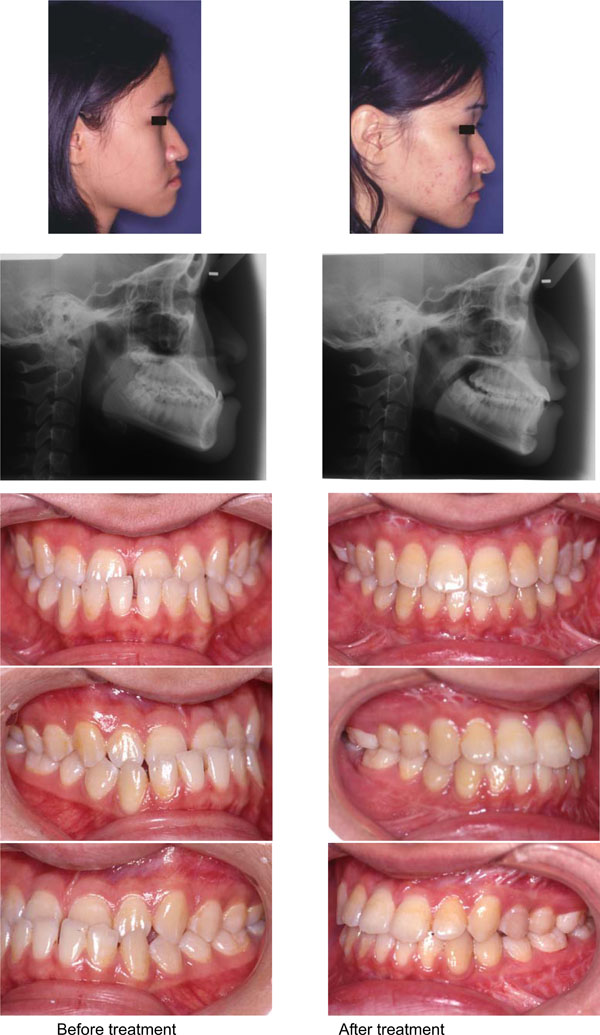
Treatment In Borderline Class Iii Malocclusion Orthodontic Camouflage Extraction Versus Orthognathic Surgery
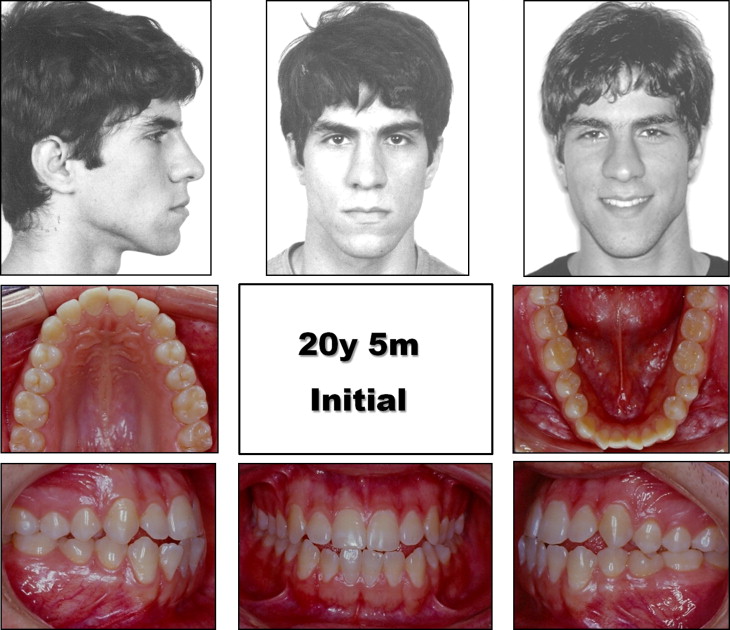
Angle Class Iii Malocclusion Treated With Mandibular First Molar Extractions Pocket Dentistry
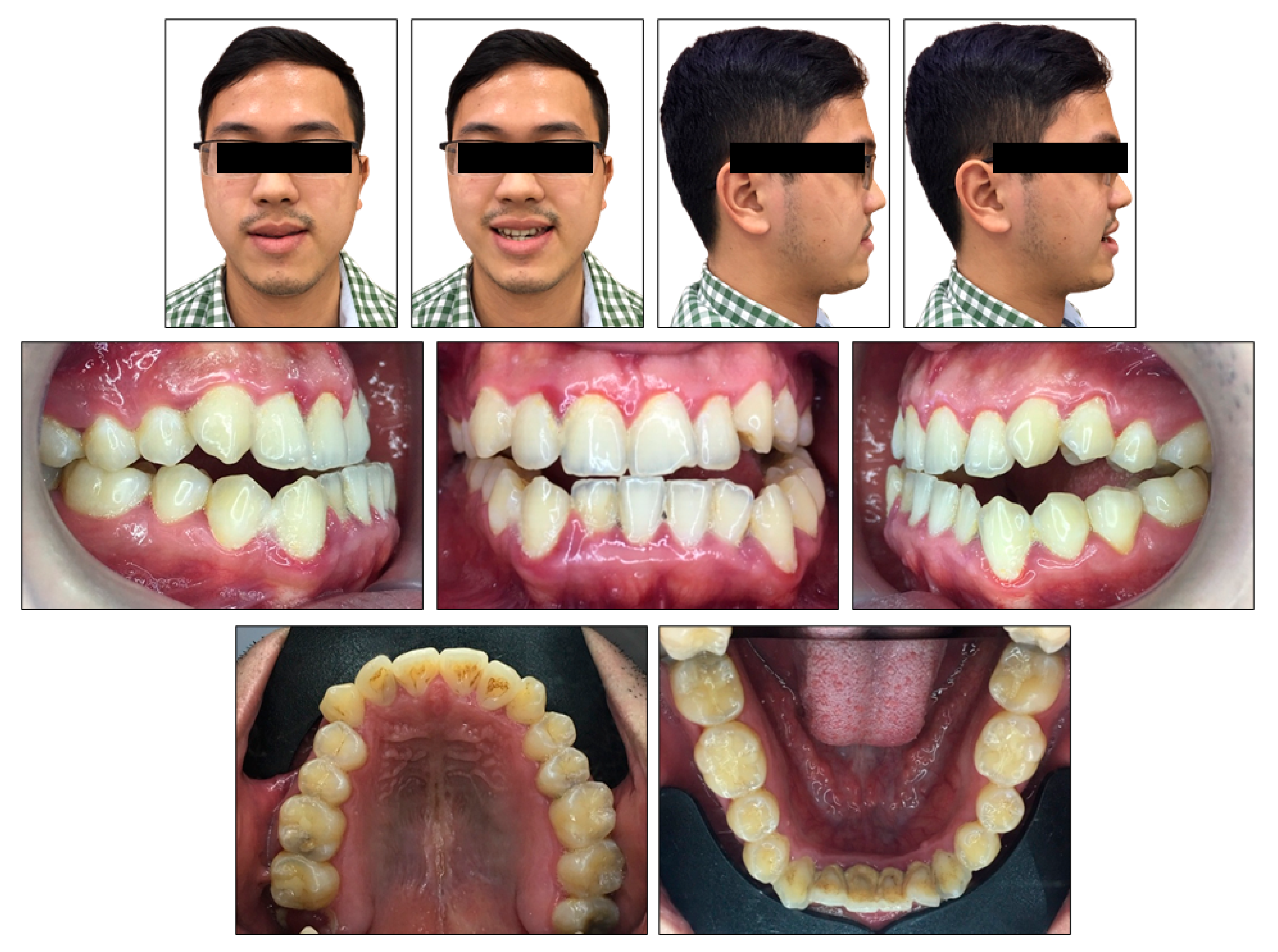
Ijerph Free Full Text Skeletal Class Iii Malocclusion With Lateral Open Bite And Facial Asymmetry Treated With Asymmetric Lower Molar Extraction And Lingual Appliance A Case Report Html
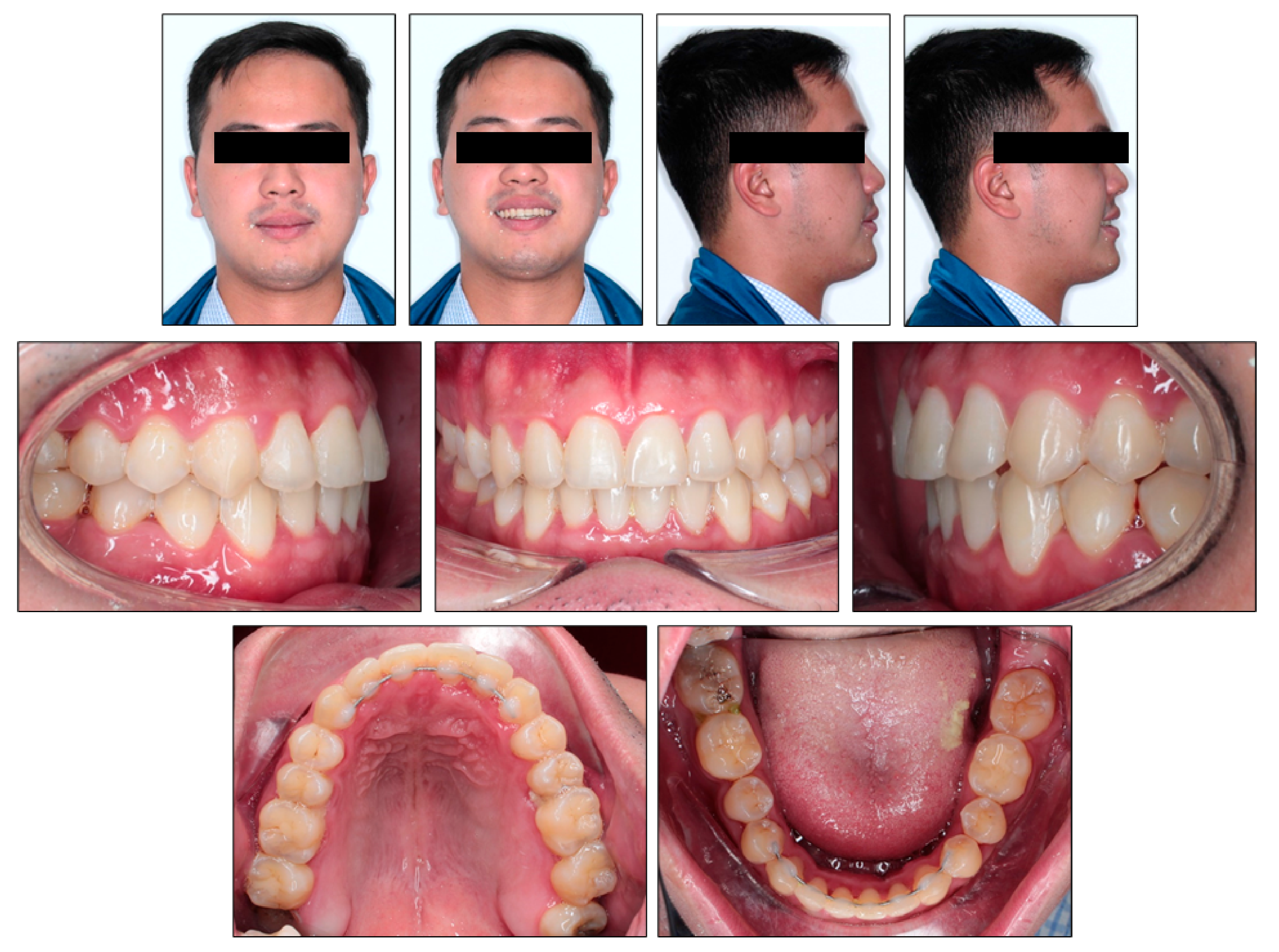
Ijerph Free Full Text Skeletal Class Iii Malocclusion With Lateral Open Bite And Facial Asymmetry Treated With Asymmetric Lower Molar Extraction And Lingual Appliance A Case Report Html

Multidisciplinary Treatment With A Customized Lingual Appliance For An Adult Patient With Severe Class Iii Malocclusion And Multiple Missing Teeth American Journal Of Orthodontics And Dentofacial Orthopedics

Adult Skeletal Class Iii Correction With Camouflage Orthodontic Treatment American Journal Of Orthodontics And Dentofacial Orthopedics

Non Surgical Compensation Of Skeletal Class Iii Malocclusions Oral Health Group

Nonsurgical Correction Of Severe Skeletal Class Iii Malocclusion Jco Online Journal Of Clinical Orthodontics
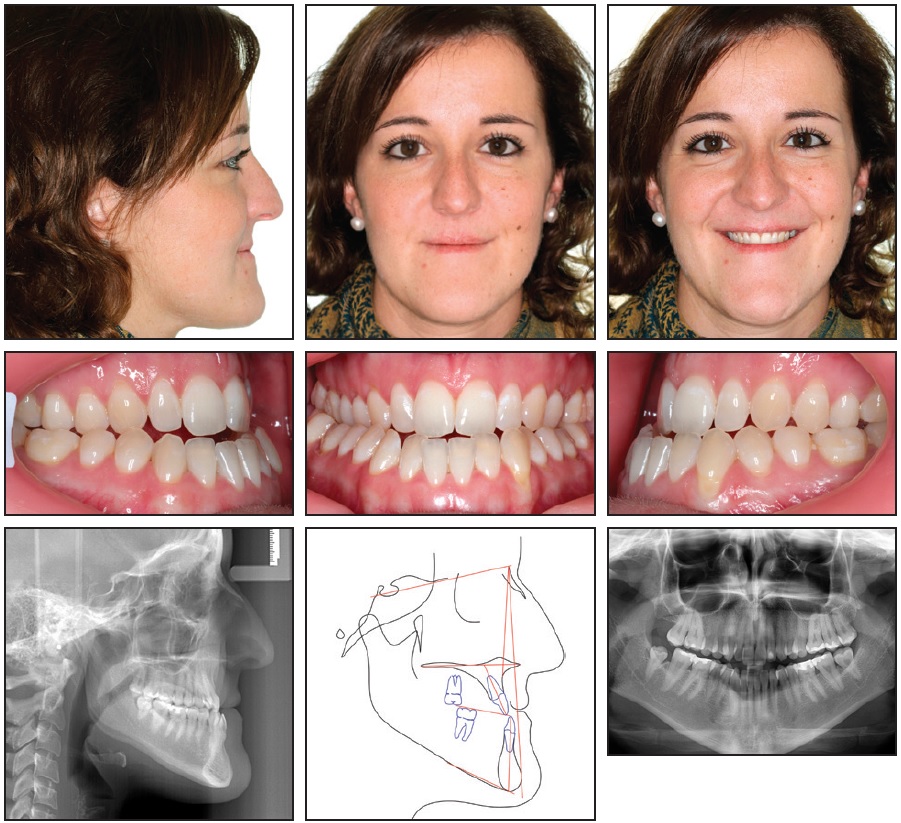
Nonsurgical Correction Of Severe Skeletal Class Iii Malocclusion Jco Online Journal Of Clinical Orthodontics
